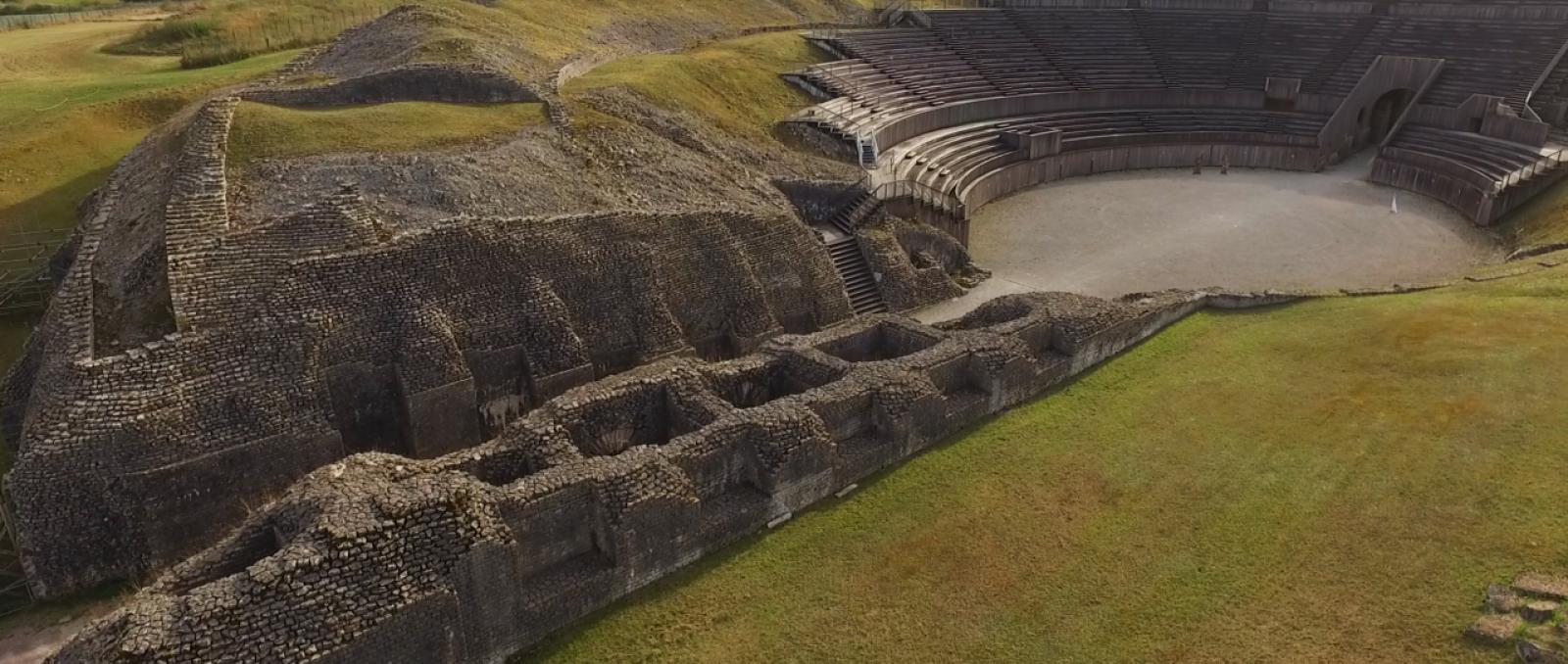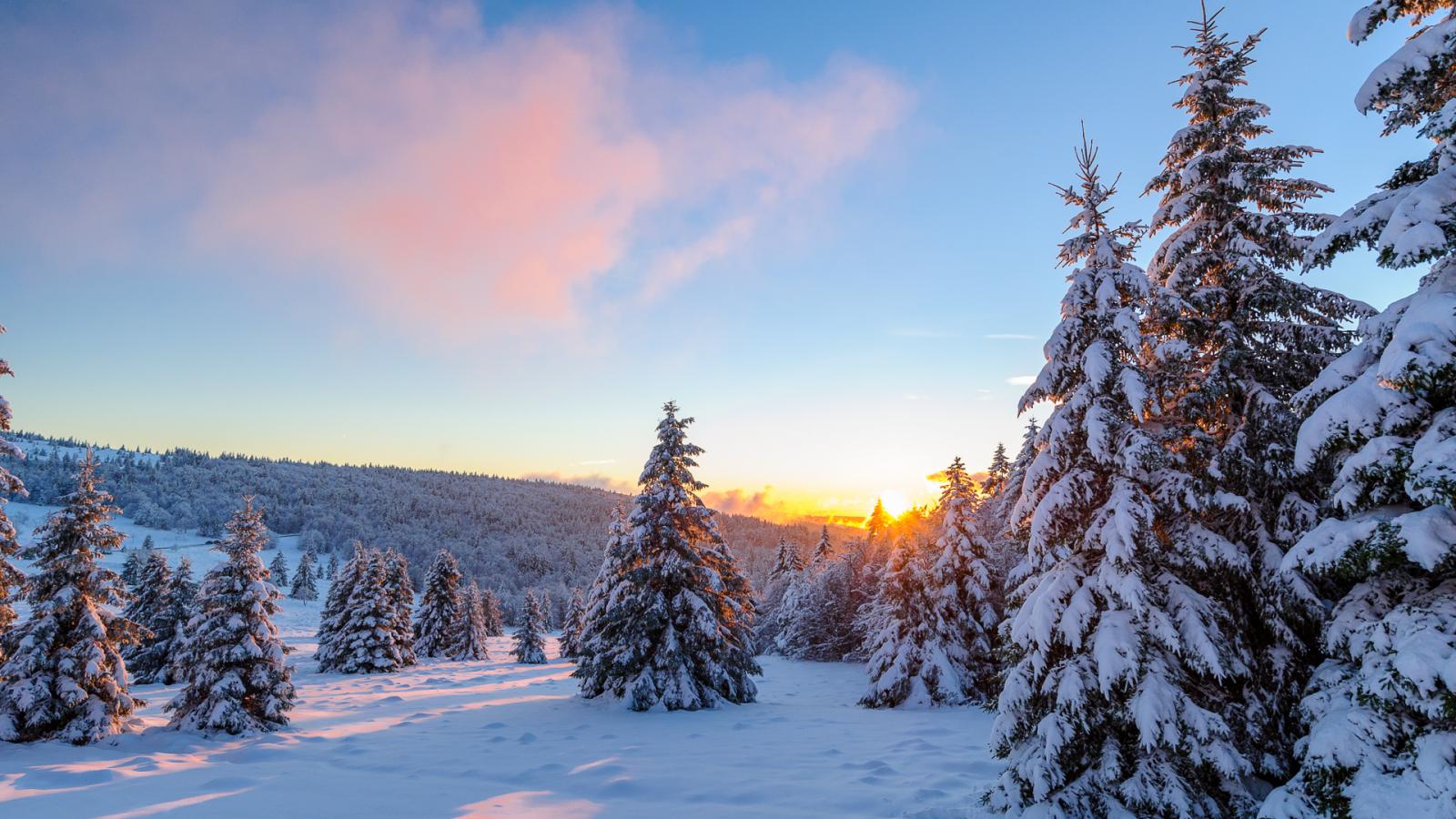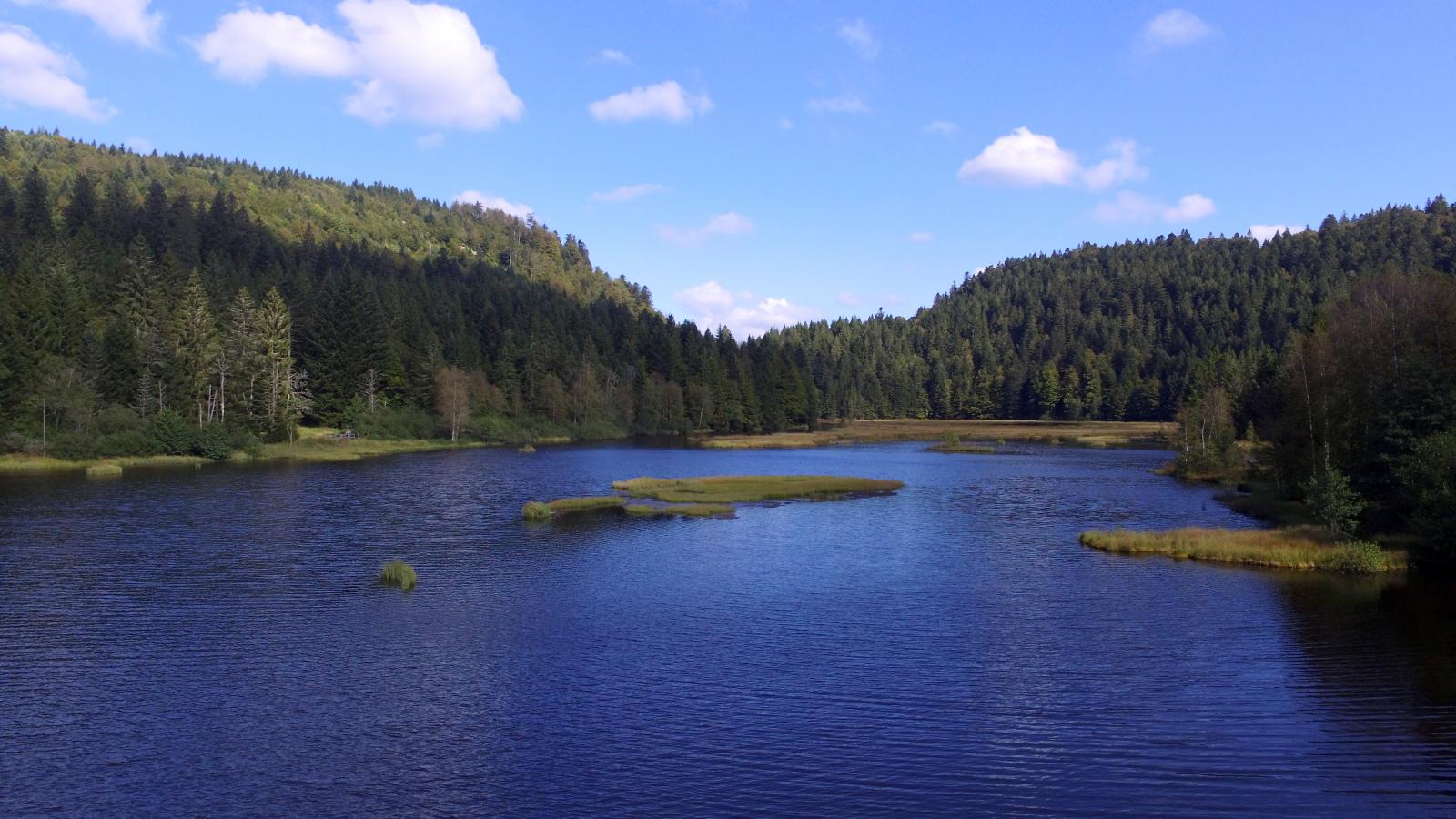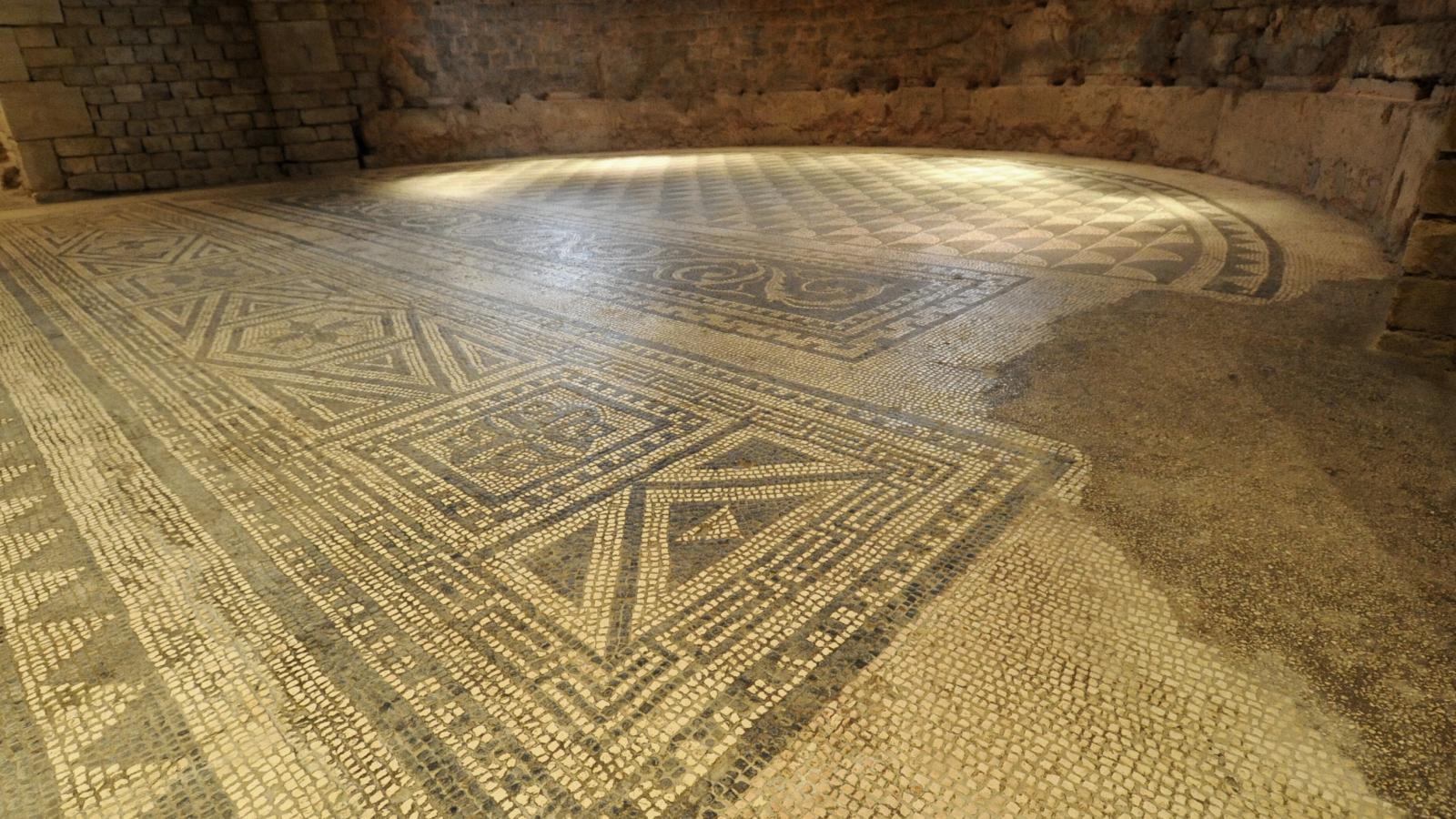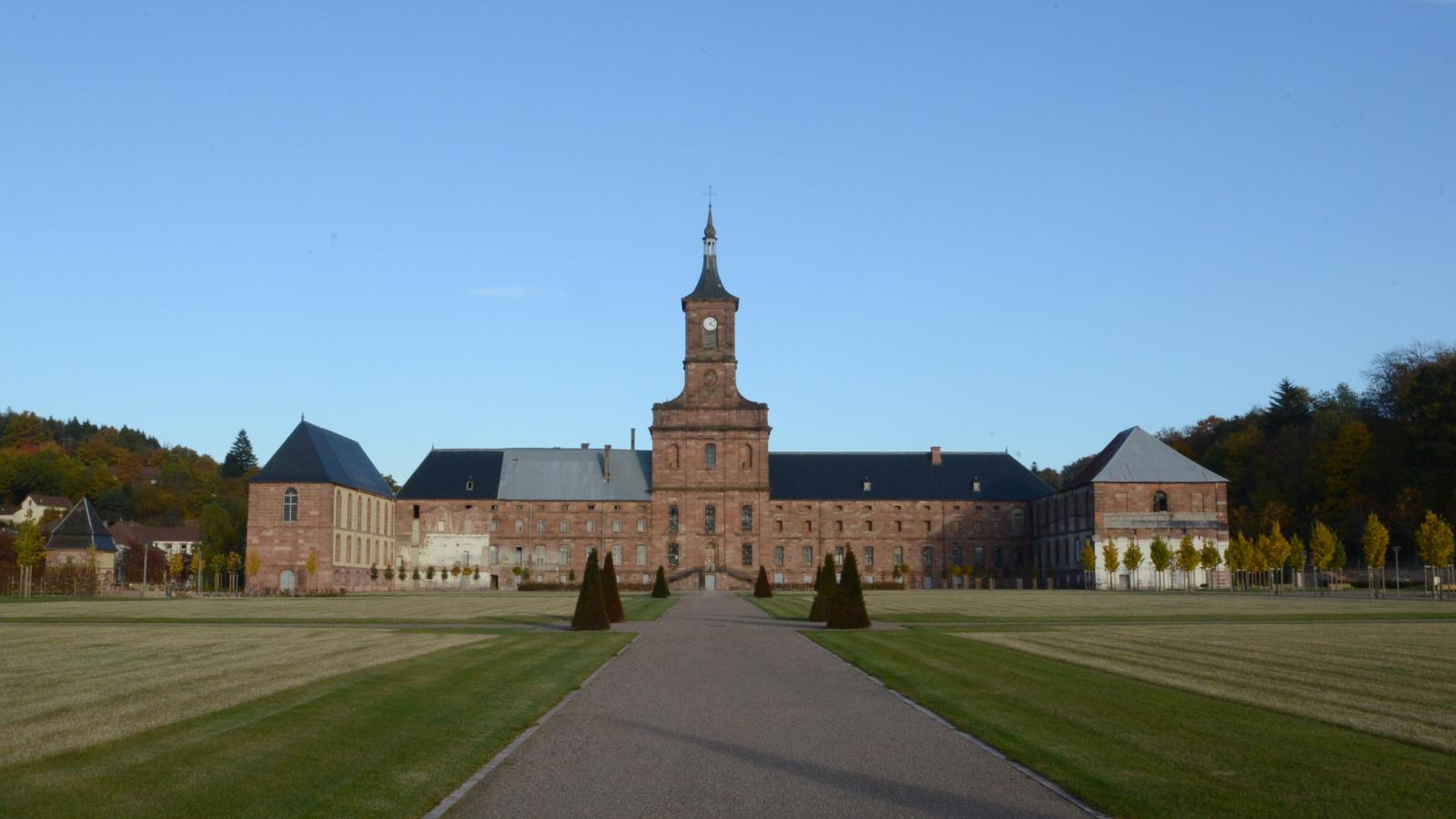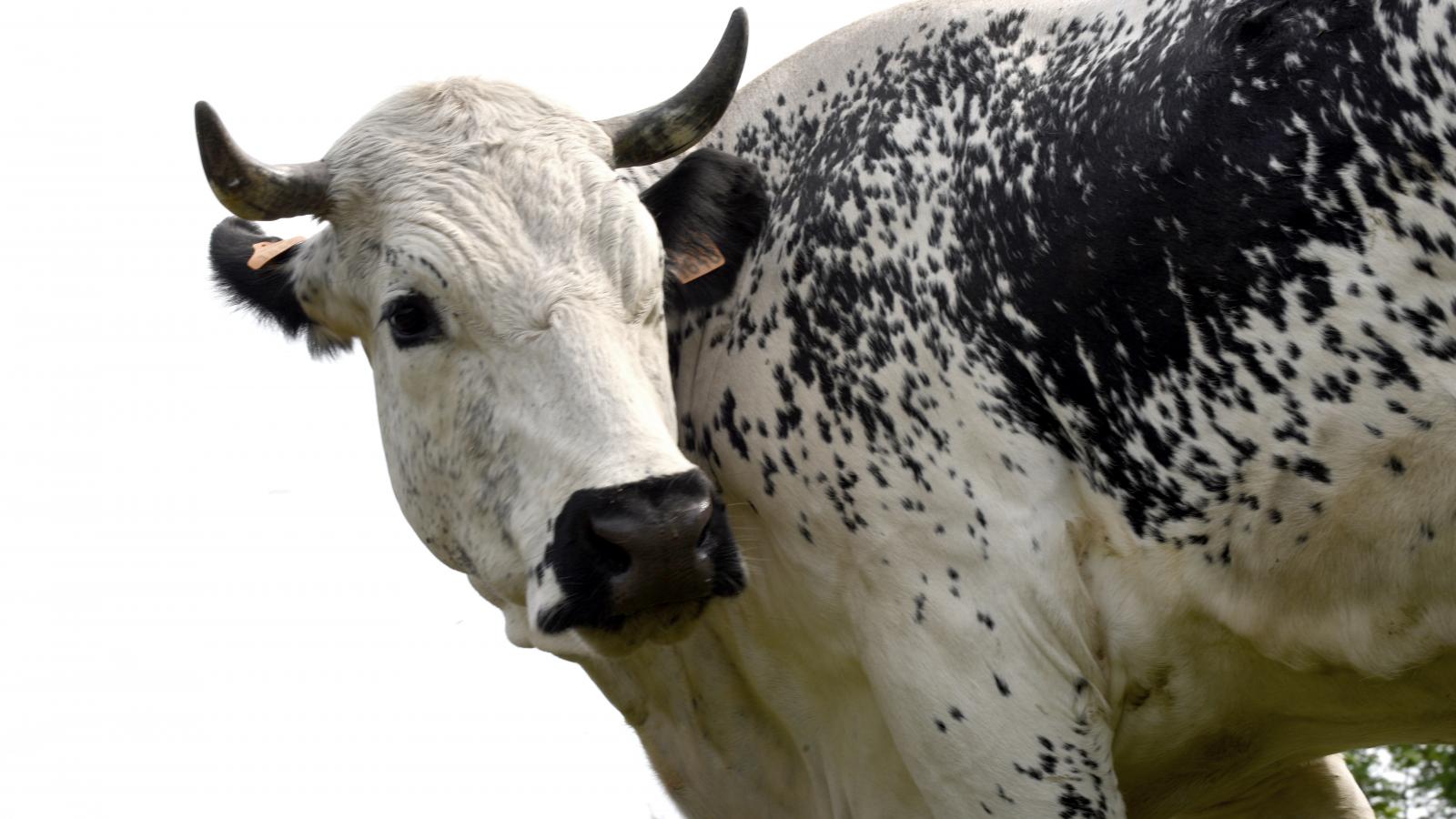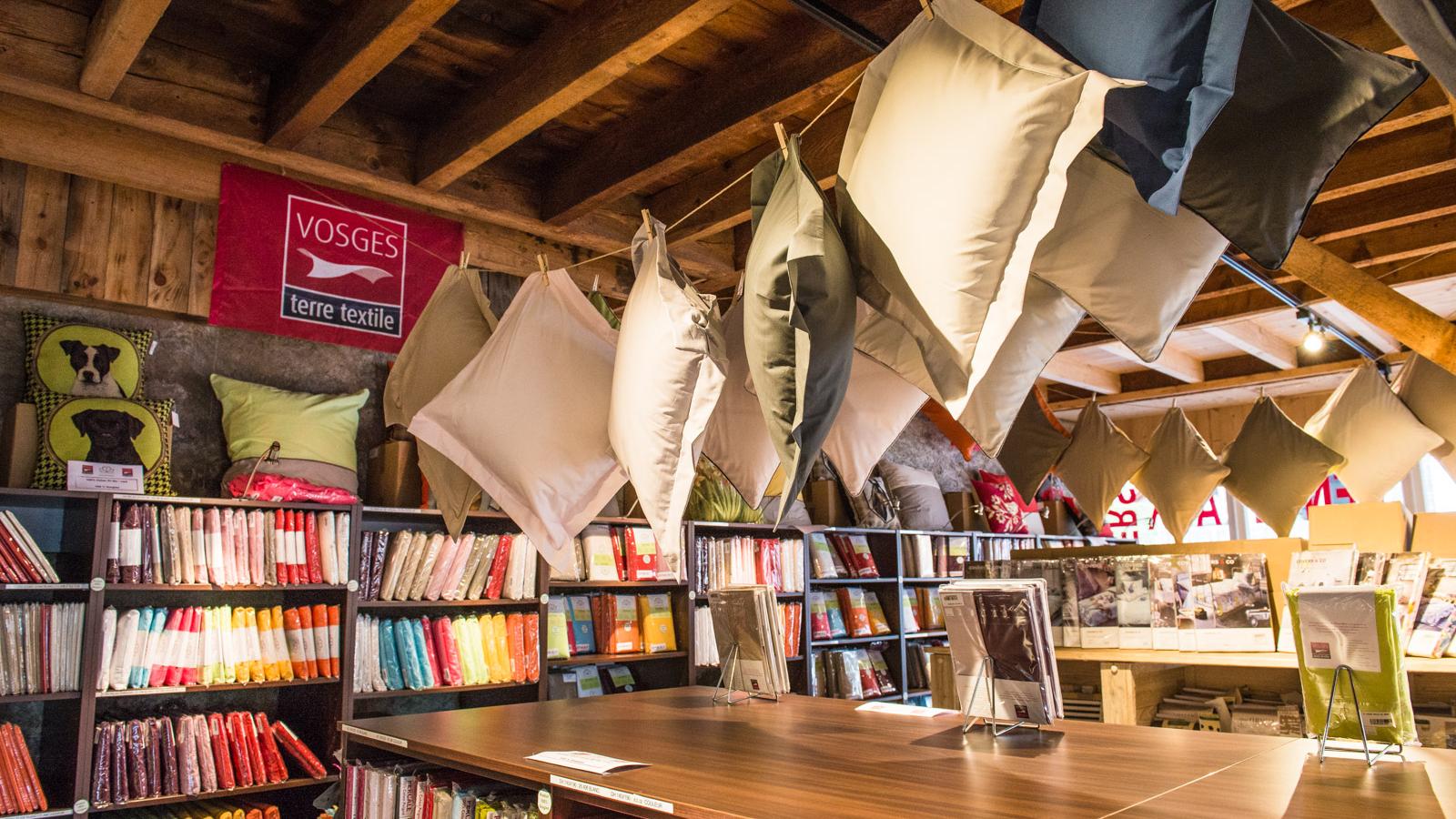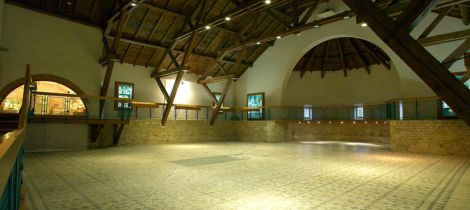Architectural jewels, natural treasures and exceptional know-how. These are the riches of the Vosges.
"These wonders fascinate and astonish with their beauty and originality.
Explore our selection!"
The forest
The Vosges forest is one of the wonders of the natural world.
"Covering 48% of the department, it is home to an impressive variety of plants, animals and trees. You can walk there, exert yourself there, and sometimes find yourself there.
Sportspeople and photographers love it for its depth and grandeur. As you venture deeper into it, you will find yourself closer to nature."
The lakes and peat bogs
Open your eyes wide and discover the incredible palette of blues and greens in the lakes and peat bogs.
Whether you’re a walker, bather, fisher, camper or all four at once, you will appreciate the wild side of these strange, mysterious places. For example, the Machais Nature Reserve, in the commune of La Bresse, is the home of the very last and largest intact floating peat bog in the whole of the Vosges massif. This is where you’ll find the sundew or the pygmy waterlily, you might see a common capercaillie, and you’ll enjoy the peace and quiet.
LakesGrand
A small village with 400 souls A forest clearing. Typical Vosges architecture.
"And then, suddenly, one of the largest partially rebuilt amphitheatres of the Roman Empire and an incredibly well preserved 224 m² mosaic! Since the 1st century, Grand has been the hiding place of an exceptional site dedicated to Apollo Grannus, the god of healing.
And you’ll find plenty more echoes of the Roman Empire elsewhere in the Vosges: Roman roads, villas and, of course, baths!"
The land of the Abbeys
In the Donon massif three abbeys founded in the 7th century, and just a few kilometres away from one another, share star billing.
"The Baroque Abbey of Moyenmoutier was home to up to 300 monks before it was sold in the Revolution and became a textile bleaching factory. Today, the industrial buildings have gone, and the abbey is revealed once more, proud and majestic.
The princely Abbey of Senones, was occupied by a succession of Benedictine monastic communities until it was sold in 1793. It then became a textiles factory. Walk around the large courtyards and gardens. Explore the Benedictine cloister and abbatial palace. Admire the monumental staircase of honour, with its wrought iron balustrade by Jean Lamour. Get lost in the huge library of this fine set of buildings dating from the 18th century.
The Romanesque Abbey of Etival stands in all its beauty on the banks of the Valdange. When it became an important abbey of the Prémontré Order in 1147, Etival had already crossed the paths of important figures like Saint Odile or Richarde, Empress and Queen of France. Having crossed the threshold of the 18th century facade, you will be surprised to discover a beautiful Romanesque abbey church, enriched by architectural evolution throughout the centuries.
Every year, Senones, Moyenmoutier, Etival and neighbouring Saint-Dié host the Abbeys Festival at the heart of an exceptional religious heritage."
Vosgienne cattle
Vosgienne cattle are like the people of the Vosges: sturdy, happy on all terrain, including the steepest slopes, and happy whether it’s snowing or fine!
This emblem of our mountain scenery has been our pride and joy since the 17th century, although it almost died out after the war. But during the 1970s a handful of breeders managed to re-establish it. Today, a group of enthusiastic farmers continue their work to develop the breed, producing our succulent Munster, Barikass, and fruity Tome de Montagne cheeses, alongside Bibeleskaes, an inimitably flavoured cottage-style cheese.
Farmhouse-innsBilberries
You’ll probably recognise these as blueberries, but they’re really bilberries! A small berry which grows in the wild and is gathered from June to September.
"Time for a tasting! Just as they come, or as a syrup, in a sorbet or in jam, in a fruit tea or a liqueur, there are so many ways to enjoy them. But more often than not, you’ll find these being served on tables across the Vosges in a tart.
Bilberry tart recipe:
1 shortcrust pastry case with 250 g flour, 125 g butter and a pinch of salt.
100 g lady’s finger biscuits, finely crushed and scattered in the base of the case (to absorb any excess bilberry juice).
700 g bilberries. Pop it in the oven at 180°C for 25 or 30 minutes.
120 g sugar, dusted over the tart when you take it out of the oven."
Textiles
From high-quality jacquard weave table cloths to linen bedding sets, lisle stockings and socks, the tradition of textile weaving lives on in the Vosges, offering products of the highest quality.
Today, there are a dozen companies who keep the tradition alive, exhibiting know-how you will learn to appreciate. There will be so much to delight you in the textile shops around the department, or in the factory shops themselves.
Vosges textiles

